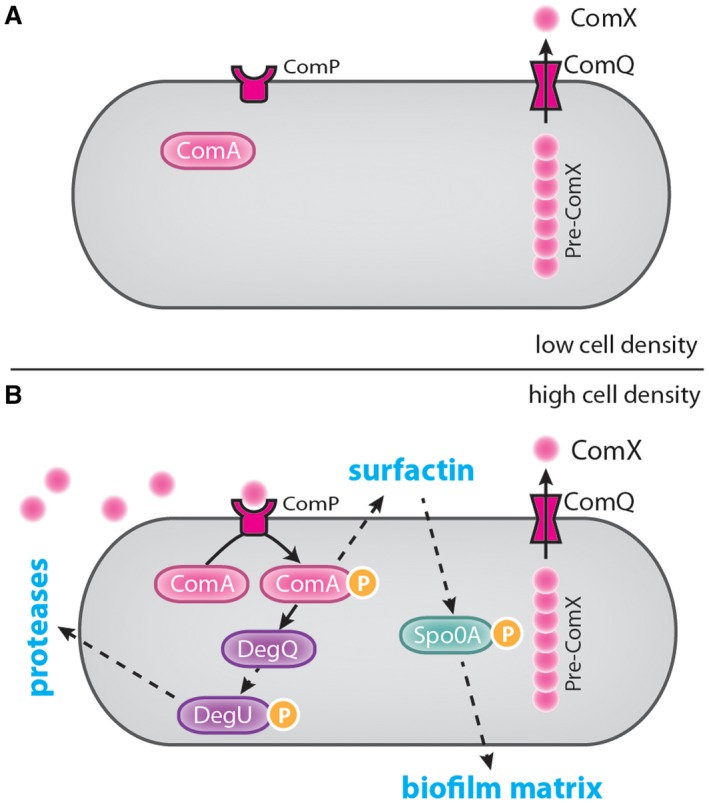Figure 2.

The ComXQPA quorum sensing system in Bacillus subtilis. Illustration of the function of the ComXQPA system in B. subtilis under low (A) and high (B) cell density conditions. Dashed arrows represent indirect regulation. Pre‐ComX (chain of circles) is synthesised in the cell, modified and exported by ComQ, resulting in secretion of the ComX pheromone (single circle). ComP is the ComX receptor. In low cell density conditions, the extracellular concentration of ComX is low and ComP does not bind ComX. Under high cell density conditions, however, the extracellular concentration of ComX increases and ComX binds ComP. ComP phosphorylates and activates ComA. ComA~P subsequently facilitates surfactin production and activates the production of DegQ. DegQ indirectly controls the phosphorylation and activation of DegU, leading to production and secretion of exoproteases. Secretion of surfactin indirectly causes phosphorylation of Spo0A and Spo0A~P facilitates production of the extracellular matrix.
